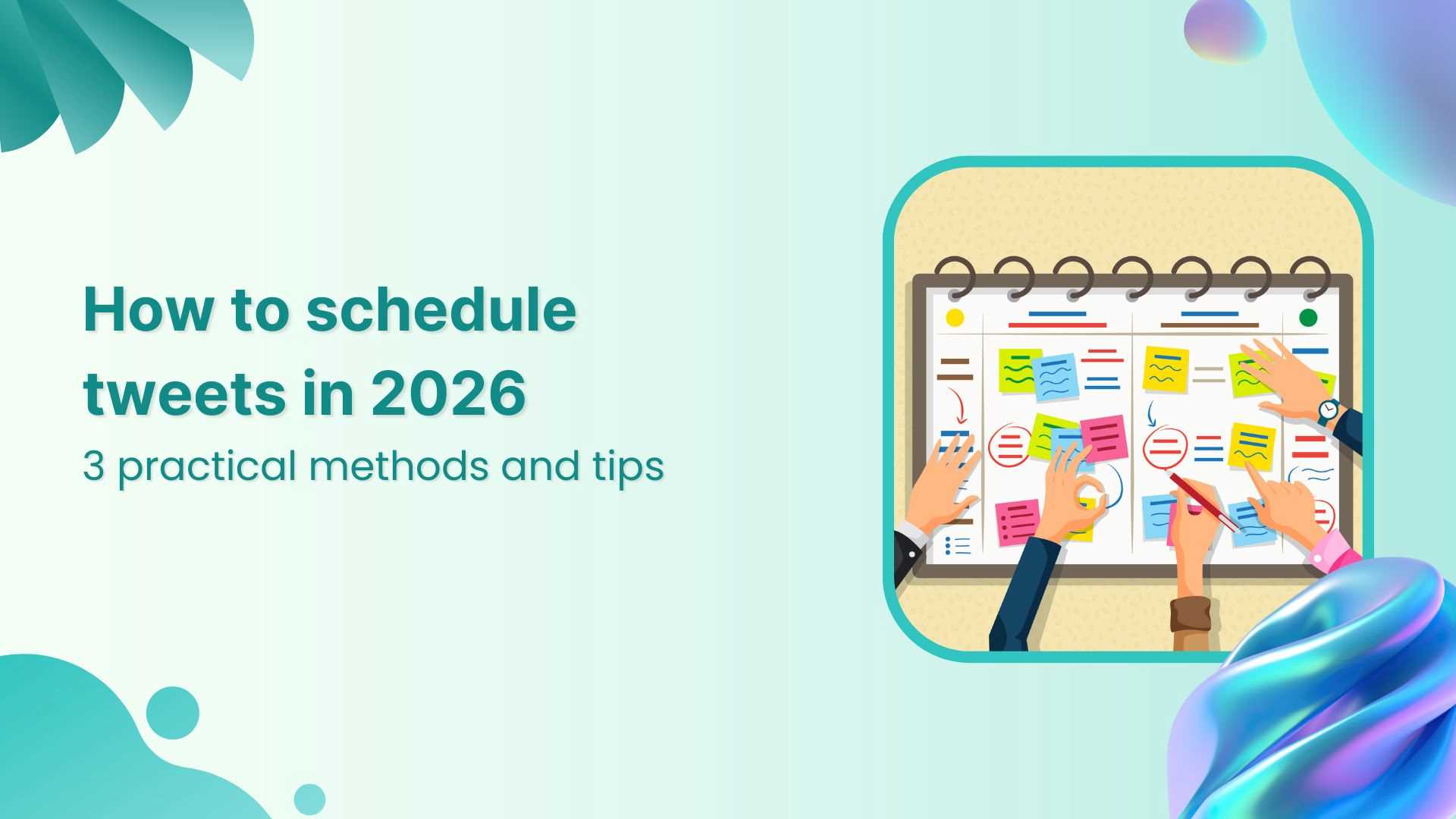Bulk-generate & schedule posts in seconds with Smart Scheduling. Try now!
Conversion rate

What is a conversion rate?
A conversion rate is a crucial marketing metric that measures the percentage of visitors who complete a desired action on your website, social media platform, or marketing campaign. This action, known as a conversion, can range from making a purchase to signing up for a newsletter, downloading a resource, or following your social media account.
How to calculate conversion rate
The basic formula for calculating conversion rate is:
(Number of Conversions / Total Number of Visitors or Interactions) × 100
For example, if your website receives 1,000 visitors and 50 of them make a purchase, your conversion rate would be: (50/1,000) × 100 = 5%
Types of conversion rates
Different business objectives require tracking various types of conversion rates:
- Sales conversion rate This measures the percentage of visitors who make a purchase on your website or through your marketing campaigns. It's particularly important for e-commerce businesses and online retailers.
- Lead generation conversion rate This tracks the percentage of visitors who become potential customers by taking actions like filling out contact forms or signing up for newsletters. For B2B companies, content marketing tools can significantly improve lead generation conversion rates.
- Social media conversion rate This measures the percentage of social media followers who take desired actions on your posts or advertisements. Understanding social media analytics is crucial for optimizing these conversion rates across different platforms.
Key factors that influence conversion rates
Several key elements influence your conversion rates:
1. User experience factors
- Website loading speed
- Mobile responsiveness
- Navigation ease
- Clear call-to-actions (CTAs)
2. Content quality elements
- Relevant and valuable information
- Clear value proposition
- Compelling copywriting
- Trust signals (testimonials, reviews, security badges)
3. Traffic quality aspects
- Targeted audience
- Traffic source relevance
- User intent match
How to optimize conversions across different platforms
Different platforms require unique approaches to conversion optimization:
Social media platform optimization
- Instagram DM strategies can significantly improve conversion rates through personal engagement
- Facebook analytics helps track and optimize conversion performance
- LinkedIn analytics provides valuable insights for B2B conversion optimization
Essential tools for conversion tracking
To effectively track and improve conversion rates, businesses should utilize:
1. Analytics platforms and solutions
- Social media analytics tools for tracking engagement and conversions
- Product analytics tools for understanding user behavior
2. Testing and optimization tools
- A/B testing software
- Heat mapping tools
- User session recording tools
Understanding conversion ROI
Understanding the return on investment (ROI) from your conversion optimization efforts is crucial. Calculating marketing ROI helps determine the effectiveness of your conversion rate optimization strategies and justifies investment in improvement efforts.
Proven strategies to improve conversion rates
Following are some key strategies you can follow to improve conversion rates:
- Conduct A/B tests on key elements
- Analyze user behavior patterns
- Implement data-driven improvements
- Create compelling headlines
- Use clear and action-oriented CTAs
- Develop targeted content for different audience segments
- Improve page load speed
- Ensure mobile responsiveness
- Simplify navigation and checkout processes
Understanding industry benchmarks
Conversion rates vary significantly across industries and platforms:
1. E-commerce benchmarks
- Average conversion rates: 1-4%
- Top performers: 3-5%
2. B2B service standards
- Average lead conversion: 2-5%
- Top performers: 5-8%
3. Social media metrics
- Engagement rates: 1-3%
- Click-through rates: 0.5-1.5%
Understanding and optimizing conversion rates is essential for digital marketing success. By implementing proper tracking, analysis, optimization strategies, and tools like ContentStudio, businesses can significantly improve their conversion rates and overall marketing performance.
The relationship between conversion rate and other marketing metrics
Conversion rate doesn't exist in isolation – it's interconnected with other key performance indicators that provide a more complete picture of marketing effectiveness:
1 :Conversion rate and customer acquisition cost (CAC)
CAC measures how much it costs to acquire a new customer. A higher conversion rate generally leads to a lower CAC, making your marketing more cost-effective. This efficiency is particularly important for social media marketing for small businesses with limited budgets.
2: Conversion rate and return on investment (ROI)
Better conversion rates typically translate to improved ROI since you're generating more results from the same marketing spend. This connection makes conversion optimization a high-priority activity for maximizing the ROI of social media.
3: Conversion rate and lifetime value (LTV)
While conversion rate focuses on initial conversions, LTV looks at the total value a customer brings over their relationship with your business. Both metrics should be optimized together to ensure you're not just converting visitors but attracting high-value customers.
4: Conversion rate and bounce rate
Bounce rate measures the percentage of visitors who leave without taking any action. A high bounce rate often correlates with low conversion rates, indicating potential issues with relevance, user experience, or page loading speed.
5: Conversion rate and average order value (AOV)
For e-commerce businesses, increasing both conversion rate and AOV can exponentially boost revenue. Strategies like cross-selling, upselling, and minimum order thresholds can improve AOV while maintaining healthy conversion rates.
By understanding how conversion rate interacts with these and other metrics, you can develop a more holistic approach to marketing optimization that drives sustainable business growth across all your digital channels, including social media platforms.
Conclusion
Conversion rate remains one of the most critical metrics in digital marketing, providing a clear indication of how effectively your marketing efforts translate into concrete business results. While a strong conversion rate is the goal, remember that what constitutes "good" varies widely based on your industry, business model, and specific conversion goals. The key is to establish your baseline, set realistic improvement targets, and continuously optimize through testing and refinement.

Create, plan, schedule, and publish posts on all social media networks
Recommended for you


Powerful social media management software
14-day free trial - No credit card required.


